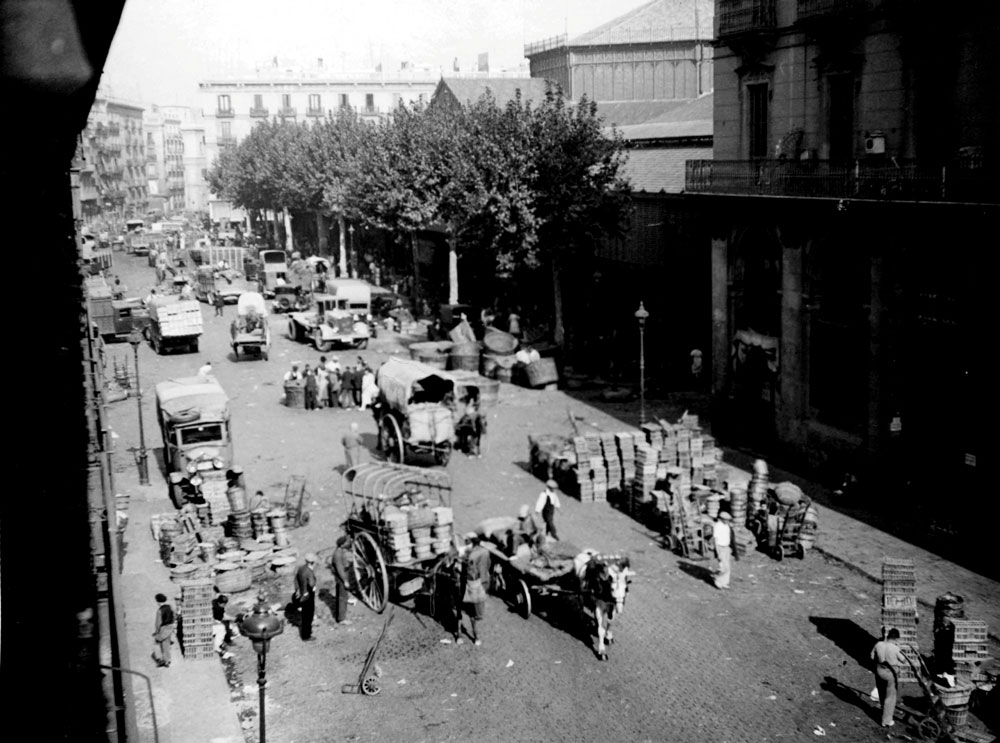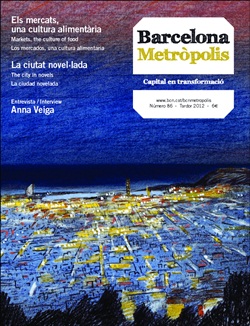Products have changed, as has the seasonal produce calendar (transport); the way we conserve our food has changed (fridges), prices have fallen (supermarkets), eating habits have changed (pre-cooked food), but despite all of this, the markets are still with us.
Nowadays the word “market” has lost a great deal of its prestige. It might be because it is equated with dollar-hungry financial sharks or because of the hackneyed use of the term “market cuisine” with which so many restaurants seek to promote themselves. It is a way of saying that the produce is fresh, right from the market garden next door, so to speak. However that is not quite true. At quarter past seven in the morning, Barcelona is a beehive of lorries and vans stopping in front of every bar and restaurant. They unload drinks, meat, fish… but forget about fresh from the market: they are shops or wholesalers that supply food to restaurants, be it bread or snails – live or cooked. To put it bluntly, the last person in the restaurant world who believed in food made with fresh market products and was true to his convictions was Ramon Cabau, of the Agut d’Avinyó restaurant, who rounded off his life by taking it in the Boqueria market in April 1987. And all the markets’ image needed was, come election time, for candidates to drop in just to say hello amid a flurry of photographers who outnumber the actual customers.

© Josep M. Marquès / AFB
Carts and wagons fill the Comerç Street, near the ancient Born Market, on 25th October 1934
Markets belong to a certain era. And the 19th century ended a good few years ago. In bygone days, a long line of carts would trickle into Barcelona before the break of dawn. It was the rural workers en route to sell their wares in the city. Their carts were laden with fruit and vegetables, eggs and poultry, as well as bread. The paths of inbound and outbound carts often crossed. The latter were loaded up with waste from toilets and latrines, which now, their drums almost overflowing, were headed for the fields, to the dung heaps, where manure was made for the coming season’s artichokes and carrots. This image is an old one, very old, because things are totally different now.
Like everything else, markets are being increasingly bludgeoned by reality. First of all, by the world of technology: fridges, frozen food and microwaves have put an end to a certain way of procuring and consuming food. People no longer buy on an everyday basis, but rather do so to hoard and use when required, which means – among other things – that we buy more than we need. And anyone who wants to eat fresh, local produce has an urban kitchen garden on the roof terrace of their house. Then there is the question of wallet size: the large food distribution channels offer cheaper products than markets do.
Who knows if the world really changes? What does change is the way we deal with life. For example, the way we eat. Fresh products – the market’s flagship – are almost non-existent in many cases. If we dine at home, it is often pre-cooked or readymade: heat, stir and serve. You would never guess, but this is actually Civil War (1936–39) food. Those years, at least from the food standpoint, were a different reality; the food was different. We are talking about the first real instance of packaged food. Markets had precious little food to sell: long queues of people to buy hound’s tongue. Other establishments sold packaged soups, canned meat and powdered omelettes. Little did those hungry souls realise that they were tasting the future. Although obviously there is a bit of a difference: what was once a life of abject misery is now a life of breakneck speed. Be that as it may, the origin of ready-made food is always linked to deprivation: in the past it was the paucity of fresh products, but nowadays what we lack is time.
Products have changed, as has the seasonal produce calendar (transport); the way we conserve our food has changed (fridges), prices have fallen (supermarkets), eating habits have changed (pre-cooked food), but despite all of this, the markets are still with us. Yes, markets are alive and kicking; there are customers – mainly women – the lifelong customers, who are therefore of a certain age. This is the other side of the coin: clientele, age, the generational changeover that has yet to materialise. And then people want to innovate, get up to speed. The outcome is that the most famous markets have become like funfairs, a place for a special day out: somewhere we go for a treat – exquisite mushrooms, or a fish that is still actually moving –; or a theme park, ideal for tourists out for a day’s culture. People go to the Santa Caterina market to gape at the refurbishing work, and to the Boqueria for a photo and a tray of peeled and packaged fruit (markets selling packaged fruit!).
As it stands, markets are being turned into icons on the cityscape rather than centres purveying basic commodities. For most people, shopping at the supermarket, the superstore or the neighbourhood Pakistani shop is the norm. And when we go shopping, no longer do we avail ourselves of that quaint wicker or palm basket lined with checked cotton fabric and leather grip handle with our bread bag neatly folded at the bottom. No, now we use the shopping trolley. A trolley, because apparently having wheels is of the essence.



